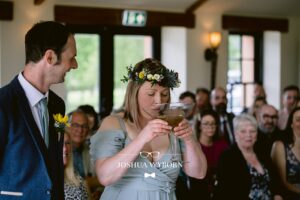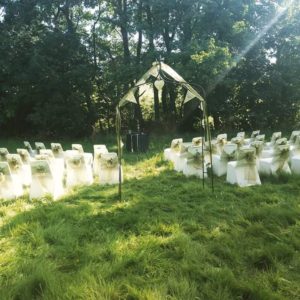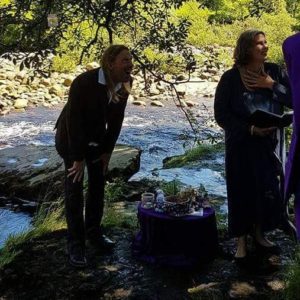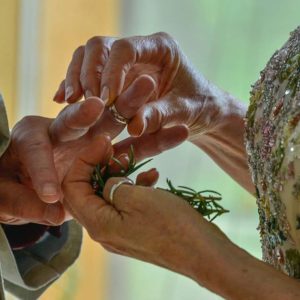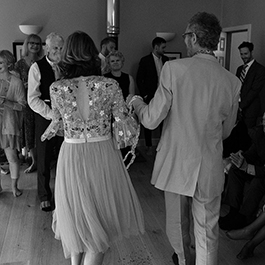Veronika Robinson has been a celebrant for 27 years. She officiates ceremonies, across all rites of passage, from Callanish to Cornwall, however works primarily out of Cumbria. She is also a celebrant trainer at Heart-led Celebrants, and is editor of The Celebrant magazine.
Rite of Cocktail Mixing: Dark and Stormy
by Veronika Robinson
It was a dark and stormy time in Laura’s life when Steve brought just the right ingredients to turn things around. This ritual symbolises the blending together of their two lives.
The Dark and Stormy Cocktail is a rather mystical, mysterious and strong libation based on just three distinct ingredients:
Kraken spiced rum
Ginger beer
Lime juice
Rum symbolises that happiness and a good time were coming their way!
They each took turns adding the ingredients.
Rum improves with age. It has a way of becoming bolder and more confident, and this is what we wished for them individually and as a married couple.
Lime symbolises fidelity. We asked that they stay faithful to each other physically, emotionally and with each thought they had. Lime brings out the elements of this drink and, just like marriage, a tangy touch can bring out the essence.
Ginger is for abundance and good fortune coming into their home. We wished that this remains so for the rest of their lives.
To give this cocktail its stormy feature, Steve add a second shot of rum.
The individual ingredients still existed as entities in their own right but blended together made something interesting, distinctive and strong.
They then enjoyed three celebratory sips, with each one symbolising a different aspect of their love.
Couple: Mr and Mrs Stables
Celebrant: Veronika Robinson
Venue: New House Farm, Lorton near Cockermouth, Cumbria
Photographer: Joshua Wyborn





